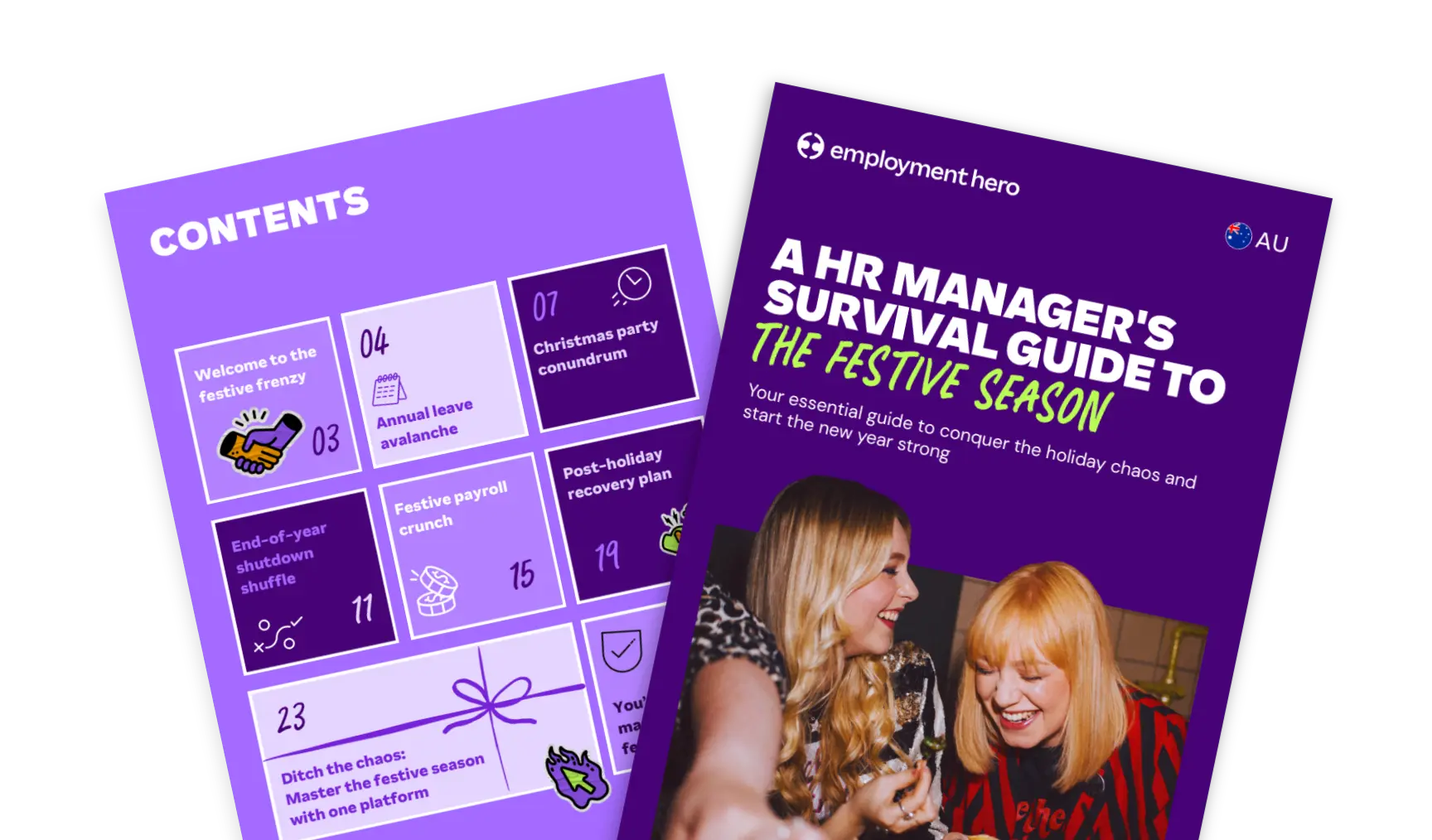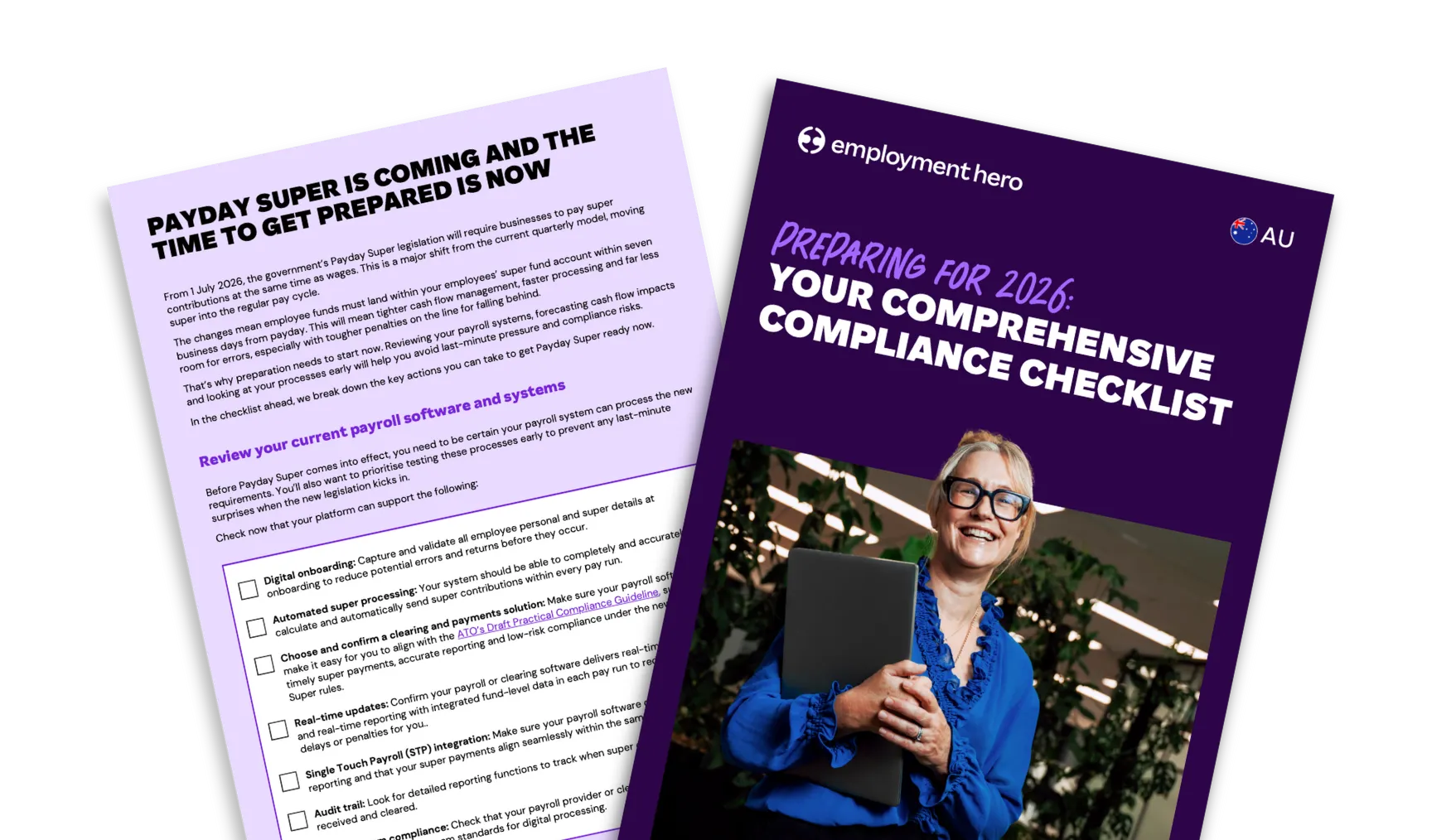Independent contractor factsheet: What employers need to know
Published
The rules for engaging independent contractors in Australia have recently changed, and these updates are already in effect.
Under the Government’s Closing Loopholes legislation (Fair Work Legislation Amendment (Closing Loopholes) Act 2023 and No. 2 Act 2024), businesses now face new responsibilities when engaging contractors. These reforms reshape how workers are classified, how contracts are structured and what protections must be provided.
Understand your new obligations, protect your business from risk and download our changes to independent contractors now.
Download the independent contractor factsheet now by filling in the form on the right.
What are the changes to independent contractors in Australia?
For independent contractors in Australia, there are a range of changes now in effect, most of which took place from 26 August 2024.
These changes include:
- A new test for determining if someone is an independent contractor or an employee.
- Alterations to the defence from “sham contracting”.
- New ability for contractors to challenge unfair contract terms.
- More protections for contractors in the road transport industry and on digital platforms.
When do the independent contractor changes take effect?
The changes to independent contractors are now all in effect. The majority of these changes, including the new test for determining a worker’s status, took effect on 26 August 2024.

Who do these changes affect?
These changes impact all businesses in Australia that engage with independent contractors.
They also affect the road transport industry and the gig economy, who now have new minimum standards and protections.
If your business model relies on contractors, you’ll need to pay close attention to your new obligations.
Why were these changes introduced?
These reforms aim to ensure that workers in employee-like arrangements receive fair pay and protections, plus make status decisions clearer through a new statutory definition of “employee” and “employer”.
These changes were also introduced to strengthen enforcement around sham contracting, give eligible contractors the right to challenge unfair contract terms and enable minimum standards for road transport and digital platform work.

New test for determining employee vs independent contractor
The new definition of “employee” has changed how you classify your workers. The decision can no longer rest solely on the written contract. Instead, you must consider the “real substance, practical reality and true nature of the relationship.”
This means looking at how the work relationship functions day-to-day, not just what the paper says.
Key factors in determining contractor status
To determine if a worker is a contractor or an employee, you must assess the entire working relationship. A well-drafted contract is a starting point, but it’s no longer the final word.
Control and autonomy
How much control does the business have over the worker? An employee typically has their hours, location and methods of work dictated by the employer.
Meanwhile, an independent contractor has a high degree of autonomy, choosing when, where and how they perform the work.
Tools, equipment and premises
Who supplies the necessary tools and equipment? Employees are usually provided with everything they need by the business, while a contractor, operating their own business, typically provides and pays for their own tools and equipment.
Financial risk and investment
Does the worker bear financial risk? A true independent contractor is responsible for their own profit and loss, must fix mistakes at their own cost and is not paid for time spent on rectification. An employee is paid for their time, regardless of mistakes.
Ability to delegate work
Can the worker delegate or subcontract the work to someone else? An independent contractor generally has the right to pay another person to perform the services. An employee must perform the work personally.
Integration into the business
How integrated is the worker into your business? An employee is presented as part of the business, often with a company uniform, email address or business card. A contractor remains separate and provides services to your business.
For expert guidance on navigating these changes, consider reaching out to our HR Advisory services.

How the old contractor test worked
Previously, High Court rulings established that the status of a worker was determined primarily by the terms of the written contract between the parties.
If a contract was well-drafted and labeled the relationship as one of a principal and contractor, that was often enough to define the legal arrangement, regardless of how the relationship operated in practice.
What does “real substance of the relationship” mean?
This new standard means courts and the Fair Work Commission (FWC) will look beyond the written agreement. They will examine the day-to-day reality of the working relationship to decide if a worker is truly an independent contractor or an employee.
This includes how the parties behave, communication methods and the level of integration into the business operations.
Why contract terms alone are no longer enough
Under the new test, you can’t use a contract to disguise an employment relationship. If a worker functions like an employee in practice, a contract defining them as a contractor will not protect your business from misclassification risks. The reality of the relationship will always override the written terms.
Opting out of the new test
A contractor who earns more than the contractor high income threshold ($183,100 as at 1 July 2025) can opt out of the new test by providing written notice to the business that engages them.
This does not mean they will be automatically found to be an employee, but rather that the old employee v contractor test (that focused on the terms of their written contract) will apply instead.
What is sham contracting?
Sham contracting occurs when a business deliberately misrepresents an employment relationship as an independent contracting arrangement.
This is unlawful, as it’s often done to avoid legal obligations like paying minimum wages, superannuation and providing employee entitlements such as paid leave.
Changes to sham contracting defences
The defence against a sham contracting claim has been significantly tightened. Businesses can no longer simply claim ignorance.
Old defence: reasonable steps
Previously, a business could defend a sham contracting claim if it could show it did not know and was not reckless as to whether the worker was an employee. This was a relatively low bar to clear.
New rules: what employers can no longer claim
Now, a business must prove it reasonably believed the worker was a contractor. The court will consider the size and nature of the business when determining if this belief was reasonable. This makes it much harder for larger, more sophisticated businesses to claim they made an honest mistake.
Penalties for sham contracting
The financial risks for getting it wrong are substantial. Businesses found guilty of sham contracting face significant civil penalties and can be ordered to back-pay years of unpaid entitlements, including wages, leave and superannuation.
NOTE: Even true contractors are entitled to superannuation from a business that engages them in certain circumstances, see guidance on superannuation from the ATO.
New rights to challenge unfair contract terms
Contractors earning below a high-income threshold ($183,100 as of 2025) now have a simpler and cheaper way to challenge unfair terms in their service contracts.
What makes a contract term unfair?
A term may be considered unfair if it creates a significant imbalance in the rights and obligations of the parties, is not reasonably necessary to protect legitimate business interests and would cause detriment to the contractor.
How contractors can challenge terms
Instead of going through complex and expensive court proceedings, contractors can now apply to the Fair Work Commission (FWC) to have unfair contract terms reviewed, amended or set aside.
Examples of potentially unfair contract terms
Examples of terms that could be challenged include:
- Terms that allow the business to unilaterally change the contract without notice.
- Unreasonable restraint of trade clauses that prevent a contractor from working for others.
- Terms that impose unreasonable liability on the contractor.
Road transport industry: new contractor protections
Specific protections have been introduced for owner-drivers in the road transport industry, who are now classified as “regulated workers.”
Minimum standards for transport contractors
The FWC can now set minimum standards for these workers through “minimum standards orders,” which cover terms like pay, payment terms and deductions.
Who do these protections apply to?
These changes mainly apply to “owner-drivers” in the road transport industry.
Digital platform contractor protections
The reforms also target the gig economy, offering new protections for “employee-like” workers engaged through digital platforms.
Gig economy workers covered
This includes workers on platforms like ride-sharing and food delivery services who meet the criteria of an “employee-like” worker.
Minimum standards for platform workers
Similar to the road transport industry, the FWC can set minimum standards for these digital platform workers to ensure they receive fair pay and conditions.
What employers need to do to comply
Take proactive steps now to ensure you’re fulfilling your compliance obligations. We suggest starting with the ones listed below.
Conduct a contractor audit
Review all current and recent contractor arrangements against the new “real substance of the relationship” test.
Review current contractor agreements
Update your contractor agreement templates to ensure they accurately reflect a true independent contractor.
Update your onboarding processes
Ensure your onboarding process for new contractors reinforces their status as an independent service provider and does not treat them like an employee.
Risks of misclassifying contractors
Misclassifying an employee as a contractor exposes your business to significant legal and financial consequences.
Back-pay for employee entitlements
If a worker is found to have been misclassified, you could be liable for back-paying years of entitlements, including minimum wages, overtime, paid leave and superannuation, plus interest.
Penalties for non-compliance
In addition to back-pay orders, your business can face substantial civil penalties for breaching the Fair Work Act, particularly for sham contracting.
Get your compliance right with our HR Compliance: The Essential Guide.
How to correctly classify workers
The key is to assess the totality of the relationship. No single factor is decisive. Use a holistic approach to determine whether the real substance of the relationship is one of employment or a contract for services.
Employee vs contractor: decision-making framework
When engaging a new worker, ask yourself:
- Control: Do we dictate how, when and where the work is done?
- Independence: Is the worker running their own business and able to work for others?
- Risk: Does the worker bear the financial risk and responsibility for making a profit?
- Delegation: Can the worker send someone else to do the job?
If the answer to these questions points towards an employer-employee dynamic, you should engage them as an employee to avoid risk.
Download the independent contractor factsheet now by filling in the form on the right.
Disclaimer: The information in this factsheet is current as at 27 October 2025, and has been prepared by Employment Hero Pty Ltd (ABN 11 160 047 709) and its related bodies corporate (Employment Hero). The views expressed in this factsheet are general information only, are provided in good faith to assist employers and their employees, and should not be relied on as professional advice. The Information is based on data supplied by third parties. While such data is believed to be accurate, it has not been independently verified and no warranties are given that it is complete, accurate, up to date or fit for the purpose for which it is required. Employment Hero does not accept responsibility for any inaccuracy in such data and is not liable for any loss or damages arising either directly or indirectly as a result of reliance on, use of or inability to use any information provided in this factsheet. You should undertake your own research and to seek professional advice before making any decisions or relying on the information in this factsheet.
Frequently asked questions about Independent Contractors
These independent contractor changes are a key part of the broader Closing Loopholes legislation, which also includes updates to casual employment and the right to disconnect, among others. You can learn more in our Closing Loopholes Bill Part 2 factsheet.
Yes. Contractors earning below the high-income threshold can apply to the FWC to challenge unfair terms in their existing contracts.
You’re at risk of legal action, which could lead to back-pay entitlements and significant financial penalties. It is crucial to seek professional advice and rectify the situation immediately. Get in touch with our HR Advisory service for help.
Yes, the new definition of employee vs. contractor and the sham contracting provisions apply across all industries. However, there are specific new rules for the road transport and digital platform industries.
The new rules came into effect on 26 August 2024. If you haven’t already, you should review and update your agreements and practices as soon as possible.
Register for the factsheet
Related Resources
-
 Read more: HR Managers: Don’t just survive the festive season, master it
Read more: HR Managers: Don’t just survive the festive season, master itHR Managers: Don’t just survive the festive season, master it
Make year-end easier: manage leave, payroll, parties and shutdowns with confidence. Get practical tips for Australian SMEs. Download the free…
-
 Read more: Preparing for 2026: Your Compliance Checklist
Read more: Preparing for 2026: Your Compliance ChecklistPreparing for 2026: Your Compliance Checklist
Get your business ready for the 1 July 2026 changes. See practical steps for Payday Super, cash flow planning and…
-
 Read more: Monthly business budget template for employers
Read more: Monthly business budget template for employersMonthly business budget template for employers
Plan your monthly income and expenses with our free monthly business budget template. Download today to track cash flow and…























